
Blog Categories
Topics
Introduction to Synthesizers: A Beginner’s Guide

What is a Synthesizer?
Imagine harnessing the power to create any sound you can think of, from the growl of a distorted bass guitar to the atmospheric swoosh of a shooting star. That's the magic of a synthesizer. This fascinating electronic instrument doesn't just play sounds; it empowers you to mold sound from the ground up, using a blend of technology and creativity to create soundscapes in real time that are out of this world.
Synthesizers have not only stood the test of time, they've become a cornerstone in modern day music production, beloved in genres from funk and pop to techno and ambient. From their revolutionary introduction in the 1960s to their resurgence in modern digital synth form, synthesizers continue to captivate musicians and producers with their limitless sonic potential.
From analog synths, cherished for their warm, organic sounds, to modular synths, which consist of separate, customizable modules that can be patched together endlessly, there are so many options to get started in the world of synthesis. But with so many different types of synths and so many different features found throughout, it can be a bit overwhelming knowing where to start.
In this guide, we’ll look at the basics of how synths work, some key components and provide everything you need to get started navigating whatever buttons, switches and knobs call your attention!
Key Components: A Laboratory of Sound
Taking a first dive into a synthesizer is like stepping into a laboratory of sound. By manipulating electronic signals, synthesizers allow musicians to sculpt soundscapes with precision and flair. Central to this process are the oscillators, filters, envelope generators, and modulators, each a fundamental tool in the synthesizer toolkit, shaping the raw electronic sound waves into the lush landscapes of sound that define modern music.
Oscillators and Waveforms


At the heart of every synth is the oscillator, the starting line where all sound creation begins. Oscillators generate basic waveforms, think of these as the raw clay of your sonic sculpture. This is where your tone begins. Here are the most common types of waveforms found on nearly any synth:


Sine Waves:
Pure and simple, these waves are the smooth operators of the sound world, ideal for crafting subtle, mellow tones. Sine waves are the perfect starting point to learning how a waveform behaves when modulated by other parts of the synth.


Triangle Waves:
With a touch more edge than sine waves, triangles offer a richer presence, making them perfect for creating woodwind-like tone and gentle bass sounds. Their high-end dynamics make them interact with the Filter section in unique ways (more on that later).


Square Waves:
Bold and blatant, these waves are your go-to for anything from clear, penetrating leads to retro chiptunes. Square waves are great got creating 8 or 16 bit inspired sounds and most feature something called pulse width modulation which can make for some really interesting tones (more on modulation in a bit)


Sawtooth Waves:
Brash and bright, sawtooth waves are the all-stars when you need lush strings or powerful brass sections. Sawtooth waves can be heard in music going all the way back to the ‘70s. Probably the most versatile of the waveforms available, saw waves are perfect for creating lush pads and dreamy swells, pumping chord patterns, or catchy lead hooks all the same.
Filter Section


Aside from the oscillators, the filter section is probably where you’ll spend the most time on your synth. Think of the filter as the sculptor’s tool, chiseling away at the sound to enhance its texture. Filters adjust the brightness and texture of the sound by amplifying or diminishing specific frequencies. Whether you're softening the harshness of a high-frequency buzz or accentuating a deep, rhythmic bassline, filters are essential for fine-tuning the personality of your sound.
Filters consist of three main control parameters. First is the type of filter: low-pass which cuts off high frequencies, high-pass which cuts out low frequencies, and band-pass which cuts out frequencies around a given setting determined by the cutoff knob. Next, we have the cutoff knob. This control selects where exactly the frequencies begin to pass through the filter. Many synth enthusiasts will enjoy tweaking and turning this knob to create dramatic sweeps. Lastly, we have the resonance control. This parameter adds a peak, or distortion effect in layman’s terms, at the point where the filter is set. Set the resonance higher, and sweep your cut off knob to create crunchy, robotic overtones or add dynamics to your leads and help them cut through the mix.
Envelope Generator
The envelope generator is what gives your sound its dynamic shape, dictating how it behaves from the moment a note is played to when it fades away. Manipulating the attack, decay, sustain, and release (ADSR) lets you engineer everything from sharp, percussive stabs to smooth, lingering pads. Let's look at what each control does.
Attack - How soon you hear the sound after pressing the key
Decay - How soon the sound drops to the maximum sustain level after pressing the key
Sustain - How loud the sound is while holding the key
Release - How quickly the sound fades after releasing the key
Low Frequency Oscillator (LFO)
The low frequency oscillator, or LFO, is the secret weapon for adding complexity and movement to sounds. By modulating other parameters at a low, often sub-audible frequency, it introduces rhythmic changes to pitch, volume, or timbre. This can mean anything from a gentle warble to a pulsing tremor, adding intrigue and depth to your music.
Most synths will allow you to customize what parameters the LFO will control. Often times you can route specific tonal parameters unique to each waveform and modulate them via the LFO, unlocking entirely new textures. Route the Filter cutoff to the LFO and now you can automate motions on the cutoff, freeing your hands to play keys and explore other knobs. Explore what you can do with the LFO to truly feel the bounds of creative freedom you have at your disposal.
Effects


Lastly, we come to the effects. Built-in effects act like the final polish on your sonic sculpture, enhancing its depth, width, and texture. Reverb, delay, chorus, and distortion are just a few of the tools at your disposal to elevate the sound from ordinary to breathtaking.
While some synths come with effects built in, you’re not limited to just the ones included. Many synth players will incorporate stomp boxes and rack effect units to take their sounds even further!
Final Thoughts and Buying Tips
Given all the different types and options, selecting your first synthesizer can be overwhelming. Consider what kinds of sounds inspire you, the complexity of the instrument you’re ready to tackle, and your budget. For beginners, a versatile and intuitive digital synthesizer or a smaller, more minimalist desktop synth might be the perfect starting point. More experienced musicians might appreciate the tactile, hands-on experience of an analog or modular synth.
Venture into the world of synthesizers and discover the vast horizons of musical creativity at your fingertips. Whether you're crafting the next chart-topper or exploring new soundscapes in your studio, synthesizers are your gateway to an extraordinary sonic adventure.
More to Explore:
About the Author

Sam Ash Music has been serving musicians since 1924 when they opened their first store in Brooklyn, NY. Still family owned and operated, Sam Ash Music is dedicated to preserving the goals set by their founder - offering musicians of all levels the best possible selection, service and price.
Related Posts
-
 Guitar Lessons With Arlen Roth: Blues May 6, 2020Want to play the blues? What are you waiting for? Pick up that ax, crank your amp up and lather your...Read More
Guitar Lessons With Arlen Roth: Blues May 6, 2020Want to play the blues? What are you waiting for? Pick up that ax, crank your amp up and lather your...Read More -
 How to Change and Tune a Snare Drum Head May 11, 2020Drummers know — you have to nail your snare sound if you want to play like a pro. That all begins ...Read More
How to Change and Tune a Snare Drum Head May 11, 2020Drummers know — you have to nail your snare sound if you want to play like a pro. That all begins ...Read More -
 Student Violin Buyers Guide January 26, 2020We take great pride in offering the best violins for students of all ages. Whether you or your child...Read More
Student Violin Buyers Guide January 26, 2020We take great pride in offering the best violins for students of all ages. Whether you or your child...Read More -
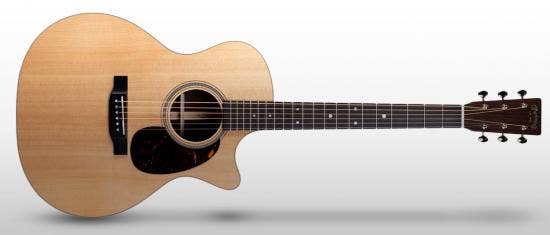 Martin GPC-16E Acoustic-Electric Guitar | Quicklook December 31, 2019Twangy, bright, and focused, the impeccably crafted GPC-16E is suited to many styles of acoustic pla...Read More
Martin GPC-16E Acoustic-Electric Guitar | Quicklook December 31, 2019Twangy, bright, and focused, the impeccably crafted GPC-16E is suited to many styles of acoustic pla...Read More -
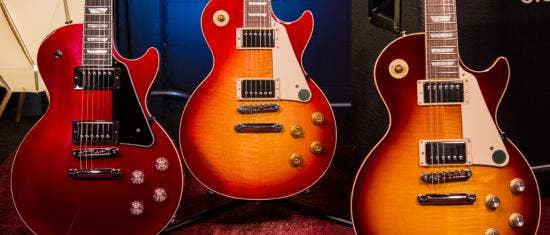 Gibson Les Paul Standard 50s Vs Gibson Les Paul Standard 60s vs Gibson Les Paul Modern October 14, 2019The Gibson Les Paul occupies a special place in the guitar world. But the earliest Les Pauls—from ...Read More
Gibson Les Paul Standard 50s Vs Gibson Les Paul Standard 60s vs Gibson Les Paul Modern October 14, 2019The Gibson Les Paul occupies a special place in the guitar world. But the earliest Les Pauls—from ...Read More -
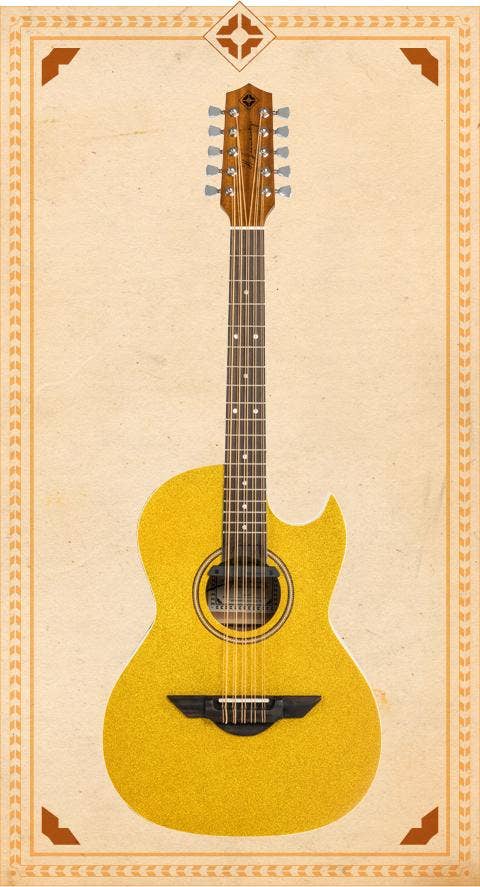 Bajo Quinto Guitars: Gear Guide January 30, 2020If you’re a guitar player that loves to expand your knowledge and capabilities, you may be interes...Read More
Bajo Quinto Guitars: Gear Guide January 30, 2020If you’re a guitar player that loves to expand your knowledge and capabilities, you may be interes...Read More -
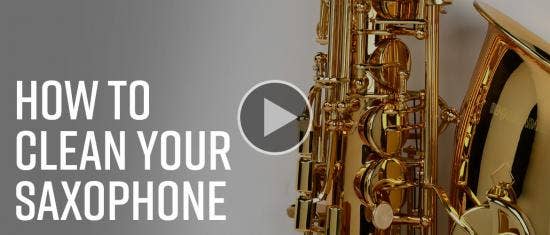 How to Clean Your Saxophone July 8, 2019Your saxophone will go through a lot of wear and tear the more you use it and the older it gets, but...Read More
How to Clean Your Saxophone July 8, 2019Your saxophone will go through a lot of wear and tear the more you use it and the older it gets, but...Read More -
 Chedeville Mouthpieces: Everything You Need to Know June 19, 2019Mouthpieces may be small, but they can have a massive impact on your music. Chedeville mouthpieces a...Read More
Chedeville Mouthpieces: Everything You Need to Know June 19, 2019Mouthpieces may be small, but they can have a massive impact on your music. Chedeville mouthpieces a...Read More -
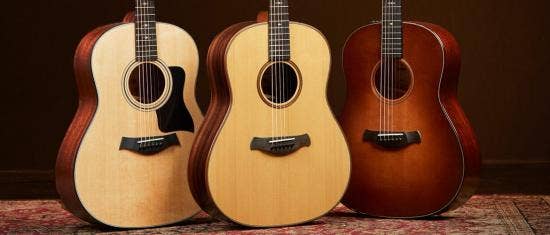 Taylor Guitars Buyer's Guide February 16, 2021Interested in a Taylor Guitar, but not sure which model is right for you? In this Buyer's Guide, Sam...Read More
Taylor Guitars Buyer's Guide February 16, 2021Interested in a Taylor Guitar, but not sure which model is right for you? In this Buyer's Guide, Sam...Read More



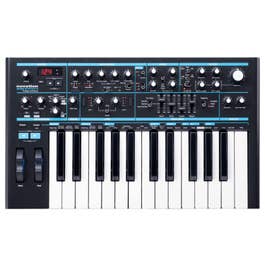





Welcome to the new SamAsh.com!
Returning Customers: Please reset your password using the "Forgot Your Password?" link
the first time you see this message.
No extra passwords to remember. We never share any of your data or post anything on your behalf.
No extra passwords to remember. We never share any of your data or post anything on your behalf.